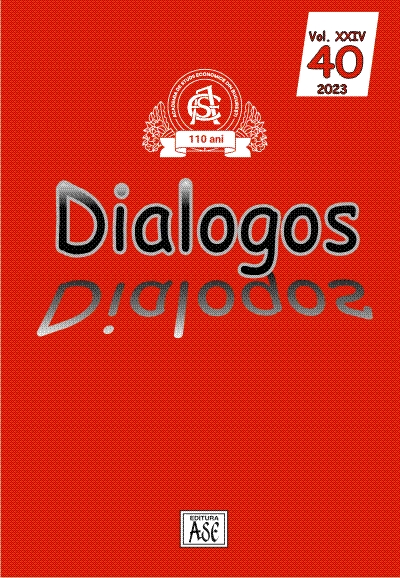When Faces Disappear – A Call for Combining Autoethnography and Complexity Thinking in Future Research on the Intersection of Physical Spaces, Technology and Healthcare Communication Education during COVID
When Faces Disappear – A Call for Combining Autoethnography and Complexity Thinking in Future Research on the Intersection of Physical Spaces, Technology and Healthcare Communication Education during COVID
Author(s): Vlad CHIRIACSubject(s): Politics / Political Sciences, History, Social Sciences, Language and Literature Studies, Geography, Regional studies
Published by: EDITURA ASE
Keywords: educational spaces; physical spaces; complexity thinking; COVID education; spaces-education-technology intersection
Summary/Abstract: Autoethnography and complexity thinking should be carefully combined when studying the intersection of physical spaces, technology and healthcare communication education as it took place during COVID. This is the call that stems from a sequential examination of existing literature. Initially, this process identified that existing research tendencies emphasize the need to understand the role physical spaces have in educational processes and highlight the demand to inquire about the opinions of educators regarding these spaces. Subsequently, analysing the manner in which these tendencies are reflected in the literature connected to teaching during COVID, showed that published research demonstrates the evocative potential of educator autoethnographies. Concomitantly, three themes stood out in the examined works: 1. physical spaces form the taken-for-granted skeleton of human existence which can be further explored, 2. matters of communication dominate the literature and set-out many yet to be probed questions and 3. physical spaces, technology and education are undeniably and complexly connected. Altogether, these findings help make the argument that future studies should investigate different instances of the following overarching question: what can be learned about teaching healthcare communication during COVID by using a complexity sensitized autoethnographic investigation focused on the physical spaces-technology-education intersection?
Journal: Dialogos
- Issue Year: 24/2023
- Issue No: 40
- Page Range: 67-81
- Page Count: 15
- Language: English

